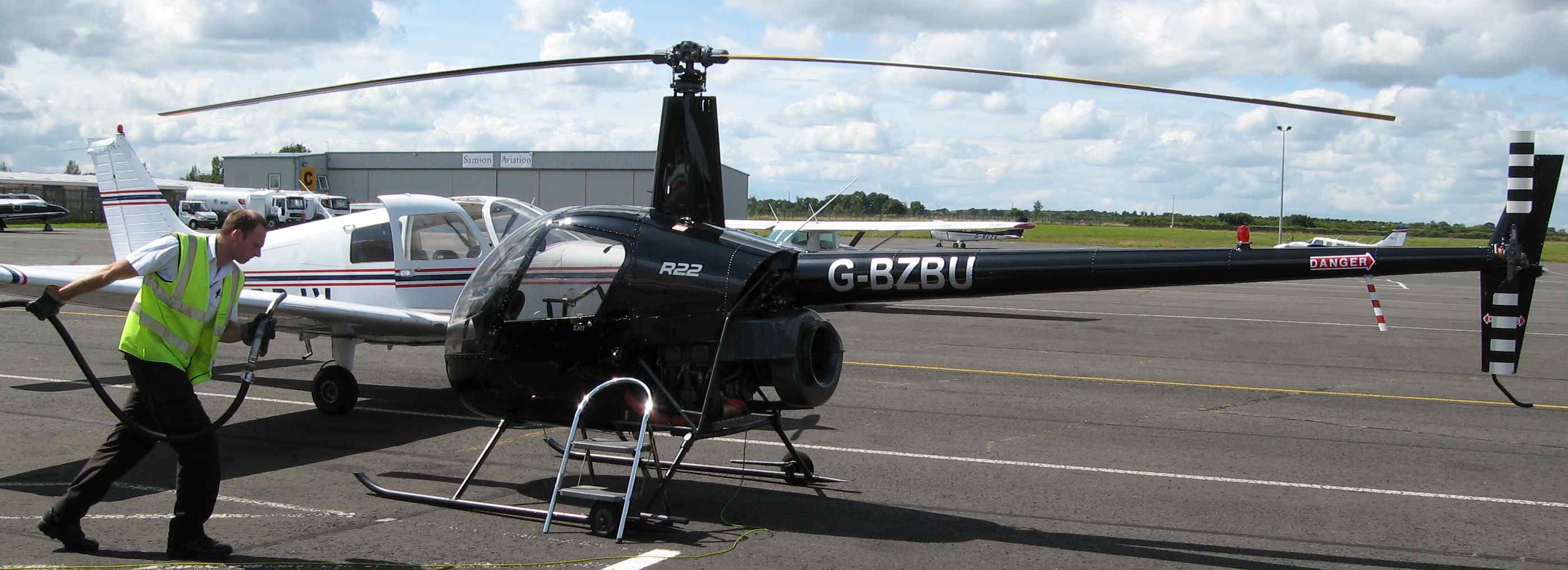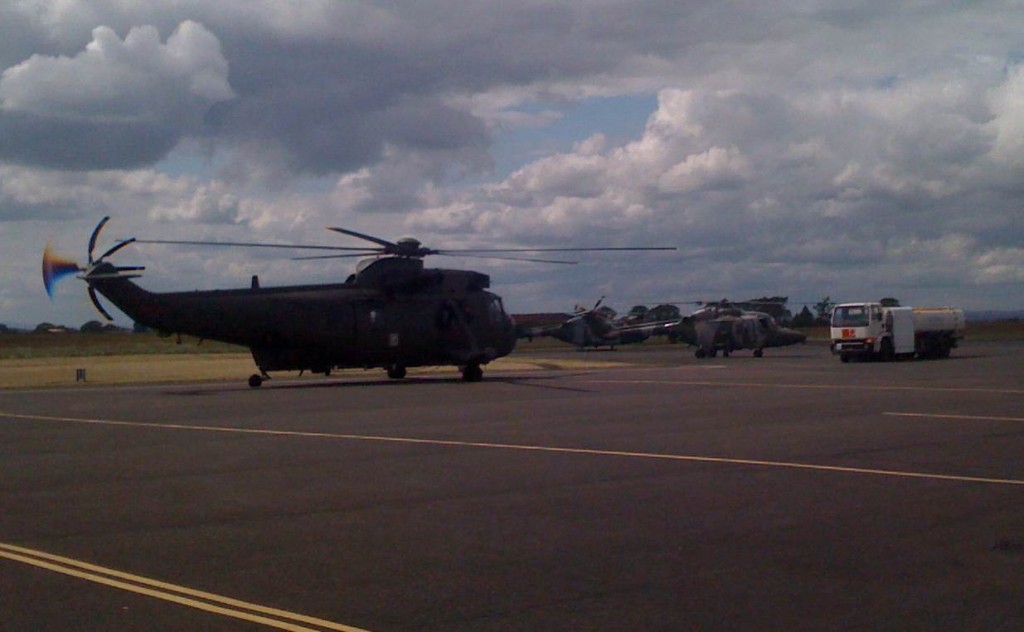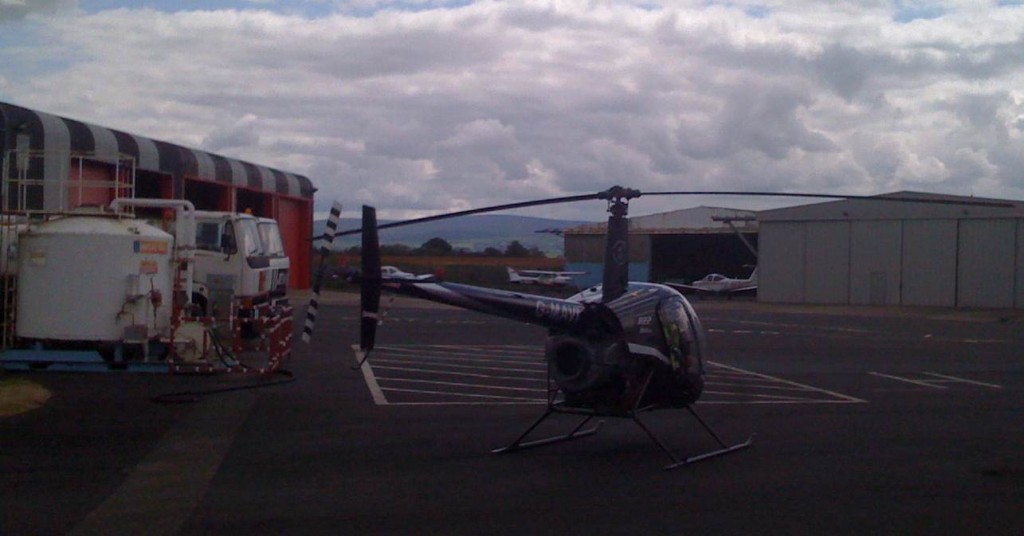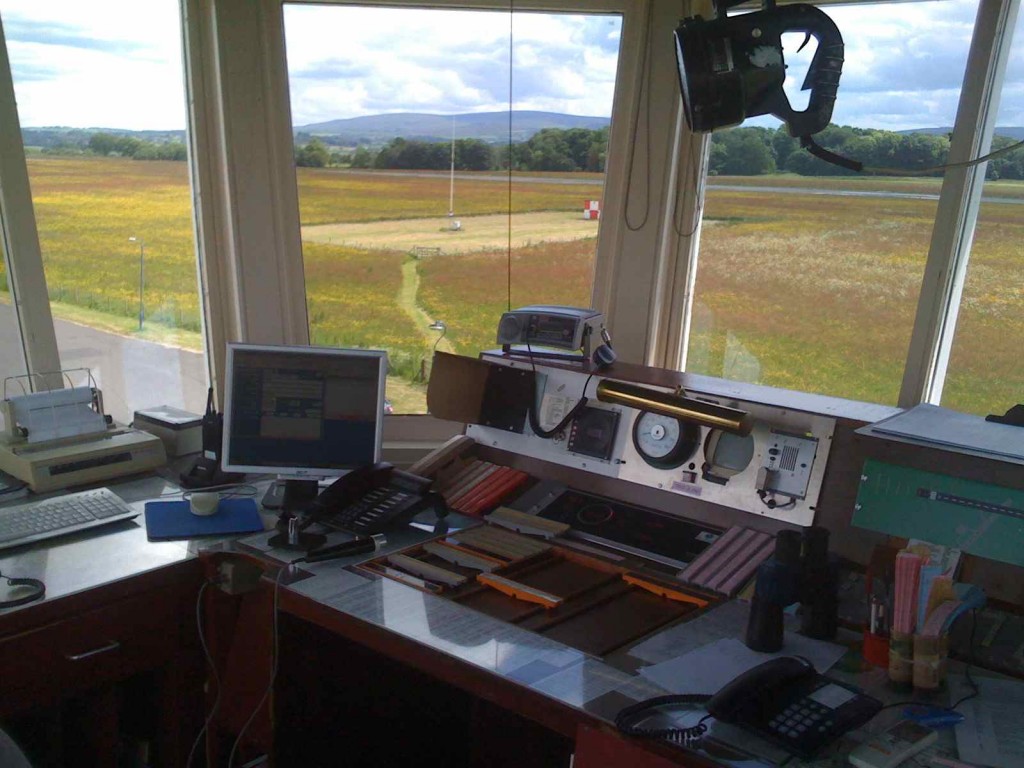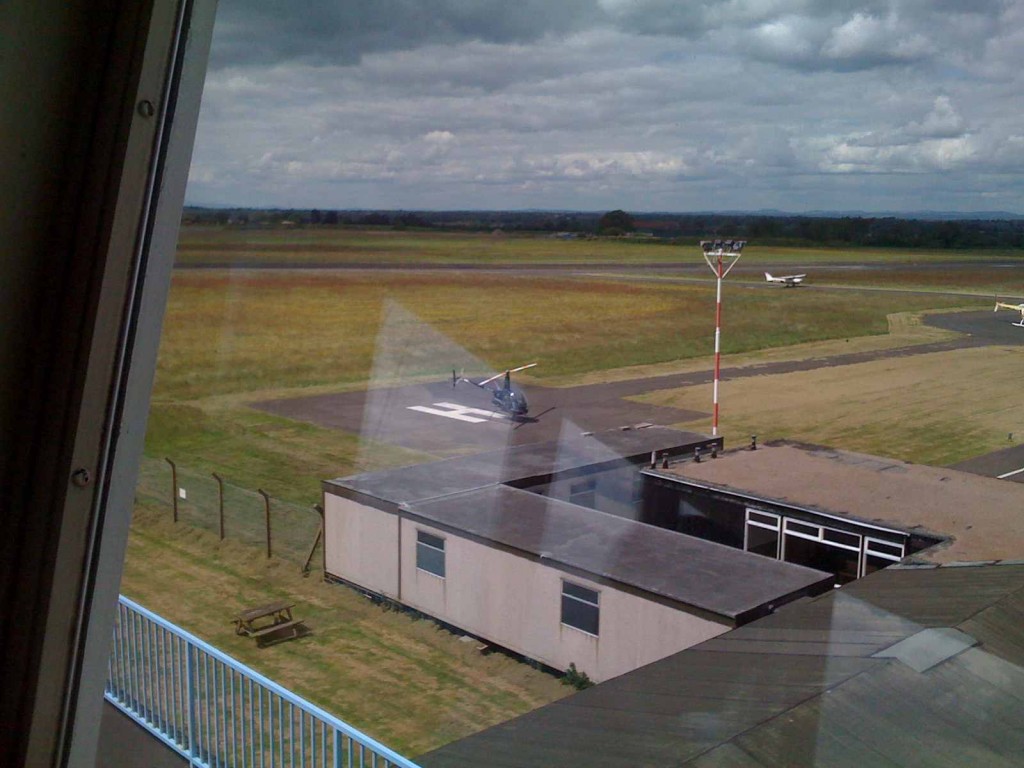Absolutely brilliant lesson – Loved it !!
Got a chance to listen in Rich’s helicopter debrief as I arrived (another student). It’s always good to chat to fellow pilots and trainee pilots and it’s quite reassuring to know that others face the same obstacles and hiccups. Good to know I’m not alone !
Once Rich had gone, Steve did an in-depth briefing on Confined Area Landings. I was glad of hearing it a second time, because it takes a few briefings sometimes for things to sink in. I was overwhelmed before the last lesson and during it, but today the briefing cemented my knowledge and the actual lesson felt really good – kind of like everything came together.
So, Steve booked out, as I went out to G-MAVI (Northumbria01), checked her over and started her up. The ATIS was not very healthy today. It gave the surface wind, temperature, dewpoint and that was about it. No runway in use, no pressure settings and no Information designator. So, I was thinking how I could get that across to Tower without rambling on for 2 minutes, but thankfully some other pilot was already reporting it and from that conversation, I could tell they already knew there was a problem too.
Startup Checks are starting to flow much better now. I’m not fluid, far from it, and still have to check the checklist, but I’m getting to the point where I’m checking a section heading and remembering the X number of things in that section. So, I’m getting quicker at it, without forgetting things, which is good.
With Steve onboard, we taxi’ed to Foxtrot and then a left hand turnout from a 07 departure. Normally, I climb to 2300′ but today that would have put us above the cloud, so we kept about 1500′. We still skirted cloud which is a lovely feeling, don’t ask me why !
Once out of the zone, we headed to a wooded area next to a prison. En route, we rolled the power back to see how much was required for 53 knots level flight and I think we had 6.5 MAP available (plenty) and we then started the first of two orbits around the confined area. Steve had said to keep the confined area at 45 degrees at all times. Not too sure I did that exactly, but after a few more attempts I’ll get that. Certainly, I circled it working out angles of entry and departure. We looked for the S’s.
- Site
- Surroundings (inner/outer)
- Surface
- Slope
- Stock (Livestock)
- Sun
and some other S’s I’ve forgot. But basically, a handy way of thinking about all the things you have to be aware of. There were some pylons on the approach, and some telegraph wires on the departure. But, it was like a mini runway as far as space was concerned and I was confident we could get in and out.
After 2 orbits around the confined area at about 500 feet, we made our approach. I’m not forgetting applying Carb Heat with any descents these days, but I am forgetting to cancel it at 500 feet, which is particularly important for confined areas where you need all the power available. Note to self !!
The approach to this confined area went much better than the previous ones with Scott where I had to abort the first one and it’s dawned on me why. When I did them with Scott, although we didn’t know it at the time, we were landing downwind (i.e. with the wind behind us). No wonder I struggled to slow it down and get it in. But, with the wind towards us today, it was so much easier. Once in the confined area (basically a strip of land surrounded by trees), we did some more of the turns where you move to the right, turn to the right, move to the right, turn to the right. They went fine. We then taxi’ed back to the trees at the downwind end, so we had ample space for the transition. I think we then did another power check and we had about 1.5 MAP available for the departure (again, ample for a vertical or towering takeoff).
And then we did a normal transition to leave the confined area and flew straight into another orbit (for practice). A second approach and hover concluded the second practice confined area landing. We didn’t actually land because….
- We’re not allowed to land away from a licensed aerodrome and
- The grass was so tall, the tail rotor would have been in the grass
So, with the second approach done, Steve suggested trying a towering takeoff. What a lot of fun. As the name implies, we pull full power (24.5 today) and then we zoom up and as we stop gaining height, start easing it forward and transition away. Awesome !
With that done, we headed back to the airport.
On the way back, Steve said we were going to practice an autorotation to a power termination. Basically
- full lowering of the collective
- throttling off the engine
- enter autorotation
- find a suitable field
- setup an approach
- Flare at the last second
- POP the collective and
- HOVER
The first one went well. I managed the throttle initially, all good, but as I stopped the rotor rpm from rising into the red (by pulling collective), the correlator told the engine to get back unto speed. So I learned that you have to HOLD the throttle off and stop it correcting itself. Good tip !!!
Steve later said that I’d done 95% of the whole thing. I was chuffed, ‘cos I’d put it more at 80%, but everything happens so fast, especially towards the end when you’re flaring 50 feet above the ground etc….
So, I thought we were all done. I made the call at Morpeth to ask for rejoin instructions and we’re heading back to EGNT. Totally to my surprise and completely OUT OF THE BLUE, Steve says “Engine Failure Engine Failure Engine Failure”. Well, without even thinking I instinctively lowered the collective, and turned into wind. I took a moment to think “what the hell” and then remembered to stop rotor rpm from rising into the red. I think I even remembered to hold the throttle off on this one. I did feel Steve do something at some point, maybe some minor throttle work, and then at about 300 feet we went around.
Loved it. It was a total surprise and a real test for the panic that would be there (but tenfold) were the engine really to quit. I was pleased that it was kind of instinct too. My only concern is if the engine really went and noone was saying outloud “Engine Failure Engine Failure Engine Failure” would I still lower the collective as quick. ![]() LOL.
LOL.
Anyway, thinking the lesson over, we climbed and headed back to EGNT. We were asked to do a couple of orbits on left base for 07.
Here’s the GPS of the orbits over the Golf Course..….
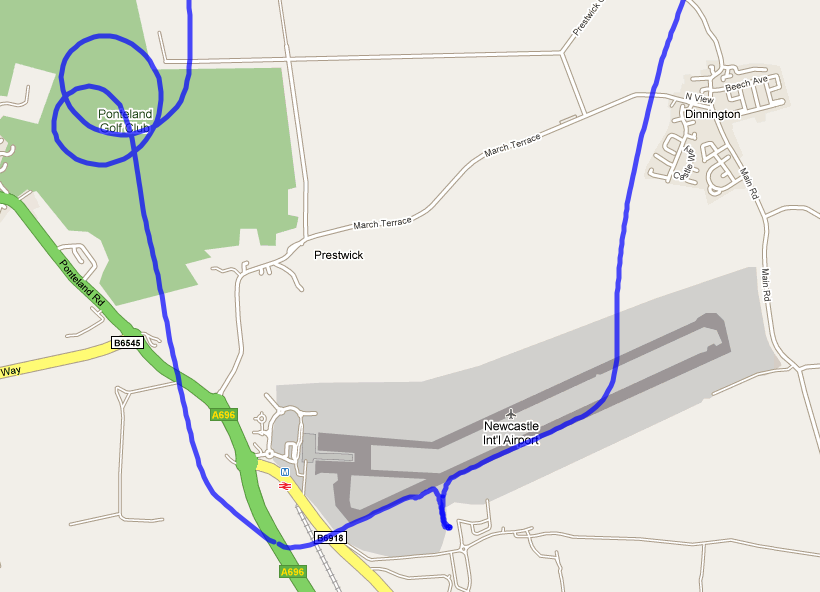
With the landing aircraft down, Steve made a radio call and asked if we could do another auto onto the runway and that was ok with them, so we did another auto to a powered termination and that went well too. Steve said I did 99% of that one. I think he helped with the throttle on that one too.
So, brilliant lesson – one of my favourites so far and that’s with a landing rated 4/10 on the dp scale. The landing was safe, but one skid touched first and then when they both touched we clunked down, not graceful, but we made it ![]()
So, all good !!!
Here’s the trip we did..….
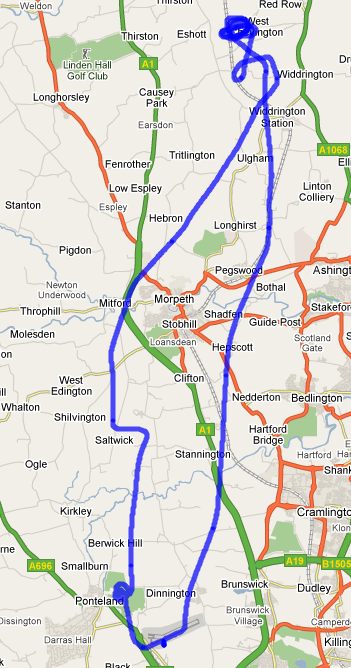
Here’s the confined area stuff in more detail..…The larger circles are the orbits and the more narrow oval things are totally rectangular circuits ![]()
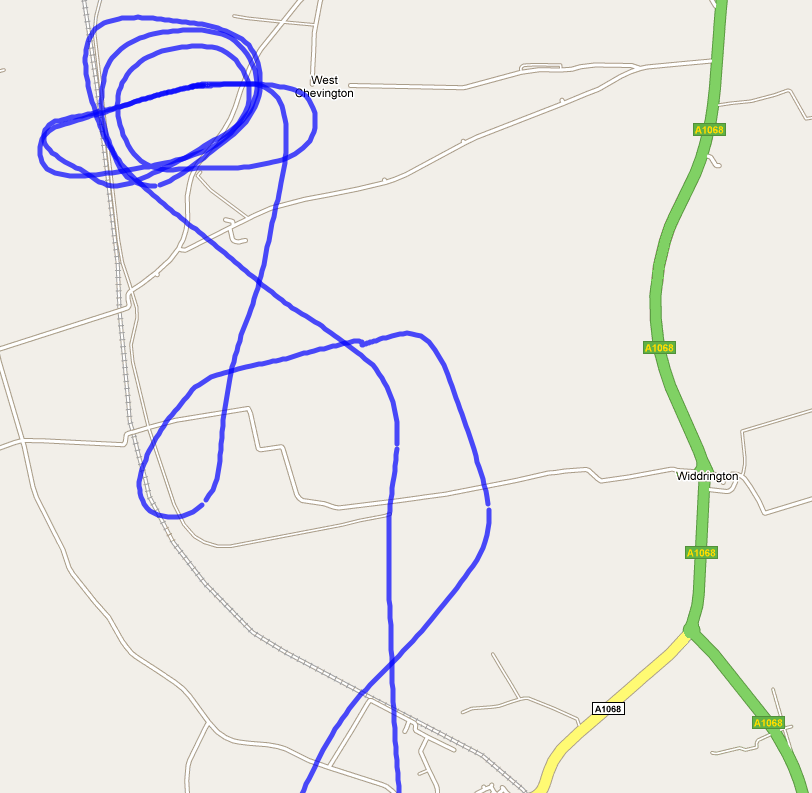
Video to follow tomorrow if time permits..…

